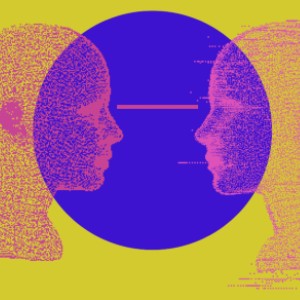
The industrial landscape is undergoing a digital transformation at a breakneck speed. Prominent entities across a myriad of sectors are preparing for the digital revolution by integrating a host of technologies such as IoT, AI, Big Data, digital twins, and robotics, in their processes, products, and workflows. Studies suggest that almost 68% of manufacturers are in the process of either evaluating or implementing digital transformation initiatives.
Industrial Internet of Things, blockchain, AI (Artificial Intelligence), AR (Augmented Reality), VR (Virtual Reality) and automation, are among the major solutions from a vast array of technologies being leveraged by industrial players to establish a presence in the digital ecosystem.
In the modern era, the digital twin market is gaining rapid traction as one of the foremost technologies driving this digital revolution.
A digital twin, also known as a virtual twin or a digital replica, is essentially a virtual copy of a physical system, process, or product. In simpler terms, this technology bridges the gap between the virtual and physical worlds via real-time data collection of a physical object through the use of sensors. The collected data is used to duplicate the item in a digital format, thus opening up more opportunities for analysis, comprehension, manipulation, and optimization.
First introduced by David Gelernter in his 1991 book, Mirror Worlds, and later popularized by Michael Grieves (University of Michigan) at the Society of Manufacturing Engineers conference in 2002, the digital twin concept truly came into its own following its use by NASA to generate digital simulations of its space crafts and capsules for testing purposes.
Subsequently, digital replicas have been used in an increasing number of industrial processes, with the technology being hailed as one of the most prominent technology trends in recent years.
The application scope of the digital twin industry at present is vast, spanning end-use industries such as manufacturing, automotive, healthcare, aerospace & defense, infrastructure buildings, energy & utility, retail & consumer goods, and more.
The Impact of Digital Twin Technology on Modern Healthcare Trends
The healthcare industry, especially in testing times such as the ongoing coronavirus pandemic, faces a number of inefficiencies that can impede their ability to deliver optimum patient care. Perhaps the most prominent bottleneck faced by hospitals and other healthcare entities is that of the documentation of vitals. Subtle changes in patient vitals, which were historically recorded manually by medical staff, can indicate health deterioration even before the onset of physical symptoms, which makes tracking of these changes an extremely important task in healthcare delivery.
In order to address these challenges, healthcare systems have to go beyond removing bottlenecks and integrate advanced technologies that can equip the organization with real-time data, allowing for faster reactions and preemptive measures.
Virtual twins are emerging as an ideal solution for these issues, given their ability to empower healthcare operations with smart digital applications that can enhance the expertise of clinicians and other healthcare staff.
Creating a digital replica of a hospital, for instance, can deliver robust, real-time patient and workflow information to hospital administrators, nurses, and doctors alike. Sensors used to monitor patient health and coordination with staff and equipment are the key tools used by digital twin technology to better analyze processes, keep staff informed at all times and facilitate more seamless and immediate action when needed.
Digital twin technology can demonstrate several lucrative benefits in the healthcare domain, including a reduction in wait times of emergency rooms, improved patient flows, lower operational costs, and better patient care experiences. Furthermore, the use of virtual twins can also help forecast and avoid emergencies or code blue situations such as respiratory or cardiopulmonary arrest, which can lead to more lives being saved. For example, Hamilton Health Sciences, through a partnership with ThoughtWire, gained significant benefits from the use of digital twin technology in its operations, which resulted in a nearly 61% decrease in code blue emergencies in its hospitals.
AR, VR & Digital Replicas – The Pillars of Digital Transformation in the Industrial Landscape
While digital twin technology is making considerable headway as a key disruptive technology in the digital revolution, its integration with other emerging technologies such as virtual reality (VR) and augmented reality (AR) is becoming more prominent in recent years.
Digital replicas supported by AR or VR could revolutionize the development of predictive models. For instance, VR can boost the potential of virtual replicas by allowing users to immerse themselves in the environment, thus facilitating a more in-depth and comprehensive understanding of the dynamics of both the physical item and its digital counterpart.
Similarly, AR can augment the user’s understanding of the digital replica of a certain product by overlaying it on top of the physical structure, thus helping the user to better visualize the machine’s data flows and infrastructure.
The use of AR and VR in combination with digital twin technology, as well as machine learning, can aid in the real-time breakdown of markets, public spaces, structures, and other aspects of the physical world, while supporting adjustments and testing without asserting an impact on the actual structure. For companies invested heavily in the augmented reality landscape, virtual twins can serve as a strong foundation for AR applications at scale. A last illustration that I would like to share is from the Volvo Group. The Volvo Group has earmarked AR as the ideal solution for an assembly line bottleneck due to a paper-based QA process. The company addressed this by creating a digital thread moving downstream from engineering operations to QA technicians, which improved the update and creation process of AR experiences. Using AR as a viewing tool for the 3D data generated by the virtual twins, Volvo was able to bring about considerable improvement in worker productivity and quality.
